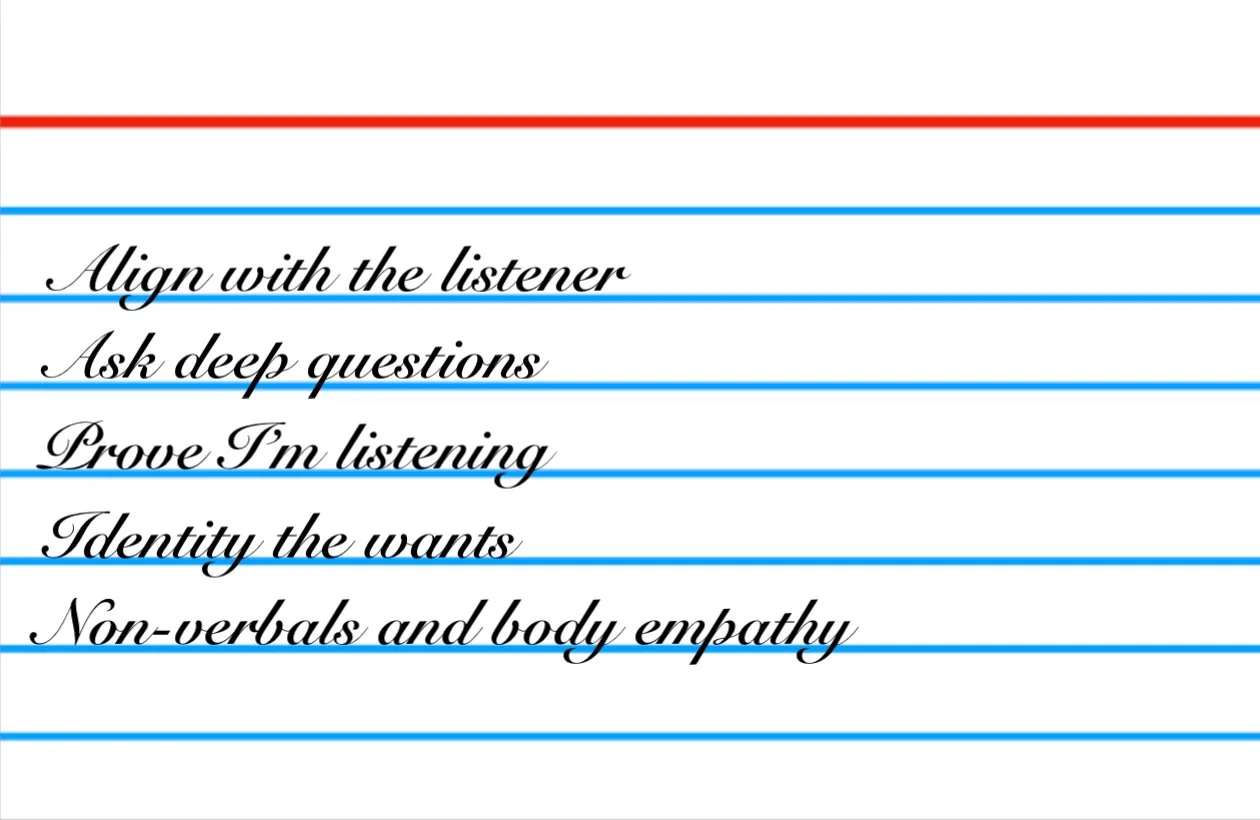Five Essential Communication Skills for Calming Conflict
/Do you feel a nervous pit deep in your gut when facing a difficult conversation with an employee or parent? I do, and I’ve been in the Christian school business for a long time! Facing a difficult conversation with a problematic person never gets easy, but it can get easier.
Over the years, I’ve learned to fine-tune the way I prepare for and enter into difficult conversations. I’ve also realized that how I communicate can be as important, and sometimes more so, than what I say.
Effective communication is one of a leader’s most important skills and responsibilities. The ability to persuade, inspire, connect, calm, correct, and teach depends on communication skills. We are responsible for communicating our school’s mission and values persuasively. We share biblical truth and how it applies to people, programs, and policies. We communicate in groups and individually with parents, staff, and students. And we often find ourselves speaking into conflict and controversy. The ability to communicate is a wondrous gift and a powerful tool. James reminds us, “The tongue is a small member, yet it boasts of great things (James 3:5). We are told in Proverbs, “To make an apt answer is a joy to a man, and a word in season, how good it is!” and “A word fitly spoken is like apples of gold in a setting of silver (15:23; 25:11).
Five Skills to Improve Your Communication
No matter how experienced we may be, we should strive to improve our communication skills. Learning and practicing the following skills will help us align and enhance our communication and leadership.1
1. Align your communication with the listener
“The single biggest problem with communication is the illusion it has taken place.” — George Bernard Shaw
We often confuse speaking with communicating and hearing with listening. Two individuals may talk and hear a lot, but they may completely miss connecting like ships passing in the night.
This is why alignment is essential. Communication alignment is “matching” our conversations with what others think, say, feel, wish, and hear. Alignment is about promoting understanding and human connection. Aligning our communication is like matching the end of a plug to the outlet. Until there is alignment, there is no power. But there is power once the plug and outlet are aligned and connected. When the speaker and listener are aligned, there is power to transform lives, calm conflict, and move the school forward.
Alignment does not require agreement. Alignment ensures that individuals understand what is being said, even in disagreement.
2. Ask deep questions
Deep questions are not just about facts but also values, experiences, feelings, and dreams. Deep questions help us connect emotionally and socially. While a conversation may start with facts, in many instances, it should move to a deeper level by asking value questions. For example, in a conversation with an upset parent, ask, “What happened that upset you?” “What would you have hoped your child would have experienced in this situation?” “What outcome for you and your child do you hope will come from today’s meeting?” “How did this situation make your child or you feel?”
3. Prove you are listening
You can only align with someone if you first listen for understanding and empathy. Steve Covey said that we should “Seek to understand before being understood,” and James tells us to “Let every person be quick to hear, slow to speak” (James 1:19–20). Hearing is not listening. Listening is active engagement. My wife has taught me this lesson. I’ll be reading or watching something while my wife is talking. She has learned to ask, “What did I just say?” At this point, I’ve been found out. If I cannot repeat what she said, it means I was hearing her speak like background noise but not listening as a caring husband. One way to train oneself to listen is to practice putting in your own words what was shared and asking if you got it right. For instance, “What I hear you saying is …” “Is that correct?” “Your concern is…, correct?”
4. Identify the “wants”
Pay attention to what the other person wants. As in the preceding example, asking summarizing and clarifying questions demonstrates that you are listening and helps identify what the other person wants. Examples of identifying questions include, “You wish the teacher/school had ….” “You hope that ….” and “What do you wish for your child at our school?”
5. Pay attention to the non-verbals and practice “body empathy”
Take "emotional communication" seriously. Work on your Emotional Quotient (EQ). The ability to "read" the person or the room is an essential skill learned over a lifetime. As you listen to the words of the person speaking, pay attention to the non-verbal vocabulary or body language, e.g., tone, gestures, facial expressions, and the like. When appropriate, align your body language with the other person's. In other words, demonstrate "body empathy." Body empathy refers to mirroring another person's body language, tone, and expressions to show understanding and empathy. It involves adjusting your physical presence and demeanor to align with the other person's, which can help create a sense of connection and rapport. Demonstrating body empathy signals that you are in tune with their emotions and feelings, thus enhancing communication and fostering deeper empathy. The caveat is that you may need to express the opposite to move the conversation forward positively. For example, if the speaker is angry and aggressive in their words and tone, it is counterproductive to respond verbally or in body language in kind. Instead, follow Proverbs's counsel: "A soft answer turns away wrath, but a harsh word stirs up anger" (15:1).
Practical Tips for Improving Your Communication Skills
1. Create a note or card that you can glance at inconspicuously before or during a conversation to remind you of the five skills.
2. Have a trusted colleague join you in several meetings as an observer. After the meeting, ask your colleague to critique how the conversation went and how you could have handled it better.
3. Practice the skills in casual conversations with family, friends, and colleagues.
4. Practice the skills during social and networking events.
_____________________________
Adapted from WSJ “How to Become a “Supercommunicator” Feb. 24, 2024, https://https://www.wsj.com/lifestyle/how-to-become-a-supercommunicator-4d97dd5d


